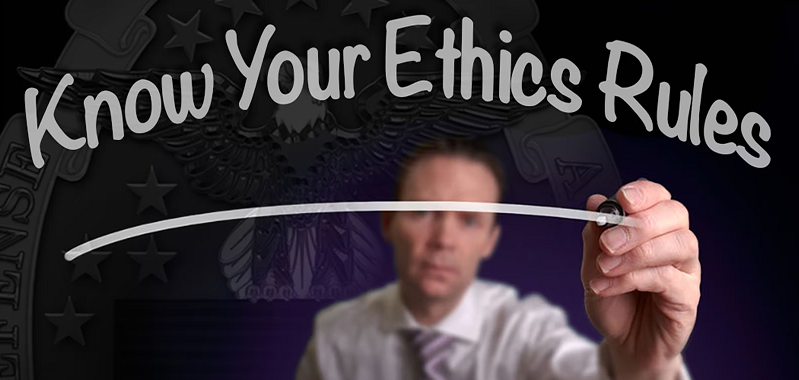
Conflicts of interest in nonprofits arise when a board member or executive’s personal or professional interests could potentially interfere with their ability to make unbiased decisions for the organization. This issue is a common one. Yet, if not appropriately managed, it can lead to legal issues, damage the organization’s reputation, and even hinder its ability to fulfill its mission. Here we explore what constitutes a conflict of interest, the legal implications, and how these situations can impact your organization.
Contents
Understanding Conflicts of Interest in Nonprofits
Before we can effectively tackle the problem of conflicts of interest, we first need to understand what they are, how they manifest in the nonprofit world, and why they can potentially cause harm to an organization.
Explanation of What Constitutes a Conflict of Interest
At its core, a conflict of interest arises when a person’s individual interests—be it personal, financial, or professional—could potentially interfere with their ability to make objective decisions on behalf of the organization. In the context of a nonprofit, these individuals are typically board members, staff, or volunteers. They are in a position where they can influence the organization’s decisions, making it crucial that these decisions are not tainted by personal gain or bias.
For instance, if a board member owns a business that is a potential vendor for the nonprofit, a conflict of interest exists. If the board member influences the nonprofit to use their business for services, even if it’s not the best or most cost-effective choice, it becomes a problem.
Types of Conflicts of Interest in Nonprofits
Conflicts of interest in nonprofits can come in various forms. Let’s delve into a few common types:
- Direct financial conflicts: These occur when a board member or an executive stands to gain financially from a decision made by the nonprofit. An example would be hiring a board member’s company for a paid project.
- Indirect financial conflicts: These arise when a close relative or an associate of a board member or an executive stands to gain financially from a decision by the nonprofit.
- Conflicts of loyalty: These occur when a board member or executive has a competing loyalty between the nonprofit and another organization. For instance, serving on two boards that are competing for the same grant could create a conflict of interest.
- In-kind conflicts: These happen when the services or products being provided to the nonprofit are not monetary but instead are offered in-kind by a board member or an executive’s company.
Potential Impacts of Unmanaged Conflicts of Interest
Conflicts of interest, if left unmanaged, can have dire implications for a nonprofit. First and foremost, they can undermine the trust that stakeholders, including donors, clients, and the public, have in the organization. This erosion of trust can lead to a decline in donor funding and support [1].
Moreover, conflicts of interest can lead to legal issues. For instance, if it can be demonstrated that a board member profited from their role unlawfully, there may be legal ramifications, including penalties and potential removal from the board.
Lastly, these conflicts can lead to poor decision-making, where choices are made for personal gain rather than for the benefit of the nonprofit and its mission. This can ultimately limit the effectiveness and reach of the nonprofit’s work.

Legal Framework for Managing Nonprofit Conflicts of Interest
Nonprofit organizations operate within a legal framework that helps ensure they fulfill their mission without personal gain or bias interfering. Understanding the legal aspects of conflicts of interest can help your nonprofit navigate this issue more effectively and protect your organization from potential legal consequences.
IRS Stance on Conflicts of Interest in Nonprofits
The Internal Revenue Service (IRS) has specific guidelines regarding conflicts of interest in nonprofits. While it does not require nonprofits to have a conflict of interest policy, the IRS does encourage such a policy as a good governance practice.
The IRS’s Form 990, which nonprofits must file annually, includes a section where organizations must disclose whether they have a conflict of interest policy in place, and if so, how they manage it. These disclosures can influence public perception, as Form 990s are public documents that donors, grant makers, and watchdog groups often review.
State Laws on Nonprofit Conflicts of Interest
In addition to federal regulations, various state laws also govern conflicts of interest in nonprofit organizations. The specific laws can vary from state to state, and nonprofits must adhere to their state’s specific guidelines. For instance, some states may require nonprofits to have a written conflict of interest policy, while others may have detailed rules about disclosing and managing conflicts [2].
It’s crucial for nonprofits to familiarize themselves with the laws in their state and ensure they are in compliance to avoid legal complications.
Legal Consequences of Ignoring Conflicts of Interest
Ignoring conflicts of interest can lead to legal consequences. These can include the revocation of an organization’s tax-exempt status, fines, or even litigation.
For instance, if a board member is found to have profited unlawfully from their position, they may be required to pay restitution to the nonprofit, could be removed from their position, and the nonprofit could face severe financial penalties.
Furthermore, high-profile cases of conflicts of interest can result in negative publicity, which could lead to decreased public trust and fewer donations.

Establishing a Nonprofit Conflict of Interest Policy
Having a thorough understanding of conflicts of interest and the legal landscape surrounding them sets the foundation for creating a policy that can protect your organization and ensure ethical operations. Establishing a conflict of interest policy is an essential tool for managing potential conflicts, fostering transparency, and protecting the integrity of your nonprofit.
The Importance of a Conflict of Interest Policy
A conflict of interest policy serves as a roadmap for your organization on how to handle potential conflicts. This policy outlines the procedures to follow when a conflict arises, ensuring that the organization can make objective decisions that align with its mission, rather than being influenced by personal interests.
Moreover, a well-crafted policy can help protect the organization from legal issues and maintain trust with stakeholders. When donors, volunteers, and the public see that an organization has a proactive policy in place, it builds confidence in the organization’s management and its commitment to ethical practices [3].
Key Elements of an Effective Conflict of Interest Policy
An effective conflict of interest policy should have several key elements:
- Definition of conflict of interest: The policy should clearly define what constitutes a conflict of interest, providing examples relevant to your nonprofit’s operations to aid understanding.
- Disclosure requirements: The policy should outline when and how conflicts should be disclosed, including a standard disclosure form and regular reporting intervals (such as annually).
- Procedures for managing conflicts: The policy should detail steps to take when a conflict arises. This could include who reviews the conflict, how decisions are made, and the process for recusal when necessary.
- Penalties for non-compliance: The policy should spell out the consequences for failing to disclose conflicts or violating the policy.
- Regular review: The policy should state that it will be reviewed and updated regularly to ensure it remains effective and relevant.
Steps for Developing a Conflict of Interest Policy
Creating a conflict of interest policy requires careful thought and collaboration. Here are some steps to guide you through the process:
- Gather a team: Assemble a team that includes board members, key staff, and potentially a legal advisor with nonprofit experience.
- Research: Review sample policies from similar nonprofits and legal guidelines for your state.
- Draft the policy: Create a draft policy that includes all the key elements outlined above. Make sure it is tailored to the unique needs and context of your organization.
- Get input: Share the draft with other members of your organization for their input and suggestions.
- Finalize and adopt the policy: After revising the draft, bring the policy to your board of directors for a formal vote to adopt it.
- Implement and communicate: Once adopted, communicate the policy to everyone in your organization and provide training as needed. Remember, a policy is only effective if people know about it and understand it.

Implementing Your Nonprofit Conflict of Interest Policy
Creating a conflict of interest policy is a significant achievement for any nonprofit organization. However, the job does not stop there. For the policy to be effective, it must be thoroughly implemented and clearly communicated to everyone involved in your organization.
Communicating the Policy to the Board and Staff
The first step in implementing your policy is to ensure that all board members, executives, staff, and key volunteers are aware of it. This can be accomplished through various methods, such as sending an email announcement, discussing the policy at a board or staff meeting, or including it in your organization’s handbook [4].
Each person should receive a copy of the policy, and it’s recommended that they sign a statement acknowledging they have read, understood, and agreed to abide by the policy. This record of acknowledgment is an essential element of your organization’s due diligence in managing conflicts of interest.
Enforcing the Policy: Roles and Responsibilities
For the policy to work effectively, everyone needs to understand their role in its enforcement. Typically, board members and executives have a particular responsibility to disclose any potential conflicts of interest due to their decision-making authority within the organization.
It’s also necessary to designate someone or a group, such as a committee, to review disclosures and handle any identified conflicts. This person or group must have a clear understanding of the policy, the legal implications, and the processes to follow when a conflict arises.
Ongoing Training and Policy Reviews
Training is an essential aspect of implementing your conflict of interest policy. Initially, this might take the form of a presentation or workshop to introduce the new policy. Over time, training should become a regular part of your organization’s activities, especially when onboarding new board members or staff.
As part of your ongoing commitment to managing conflicts of interest, the policy itself should be reviewed regularly. Laws and organizational circumstances can change, and your policy needs to keep pace with these changes. Annual reviews are a common practice, giving the opportunity to revise the policy as needed and remind everyone of its importance.
Nonprofit Disclosure and Recusal as Key Strategies
While having a conflict of interest policy and implementing it effectively are crucial steps, two key strategies stand out as vital tools in managing conflicts of interest: disclosure and recusal. Let’s delve into these two aspects and how they function in practice.
Disclosure: The First Line of Defense
Disclosure is the act of revealing a potential conflict of interest. It is the first and most critical step in managing conflicts. Once a potential conflict is disclosed, the board can make informed decisions and take appropriate actions.
To encourage disclosure, your organization’s conflict of interest policy should clearly outline how and when disclosures should occur. Often, board members and key staff are asked to complete a disclosure form at least annually, stating any possible conflicts they might have. They should also be encouraged to disclose new potential conflicts as they arise throughout the year.
It’s essential to foster a culture of transparency and openness, so people feel comfortable disclosing potential conflicts. Remember, not all disclosures will lead to a finding of a conflict. However, the act of disclosure ensures that any potential conflicts can be properly reviewed [5].
Recusal: A Necessary Step
When a conflict of interest is identified, the person with the conflict should be recused from any decision-making related to the conflict. This means that the person cannot participate in discussions, influence others, or vote on the matter where the conflict exists.
Recusal is a necessary step to ensure that decisions are made objectively and without undue influence. The process for recusal should be outlined in your conflict of interest policy, including how the recusal is documented in meeting minutes.
Case Study: Disclosure and Recusal in Action
To illustrate these concepts, consider a hypothetical nonprofit organization that runs community arts programs. One of the board members owns a local art supply store. The board member discloses this potential conflict during the annual disclosure process.
Later in the year, the organization considers purchasing a large quantity of art supplies for a new program. The board member’s store is one of the potential vendors. Given the disclosed conflict of interest, the board member is recused from the decision-making process. The remaining board members can then make an objective decision about the best supplier for the program.
References
[1] Nonprofit Governing Conflicts of Interest
[2] Nonprofit Board Member Conflicts of Interest
[3] Conflict of Interests for Nonprofits
[4] Conflict of Interest Policy for Nonprofit Boards
[5] COI: Candor Or Inhibition? Managing Conflicts Of Interest in Nonprofits
